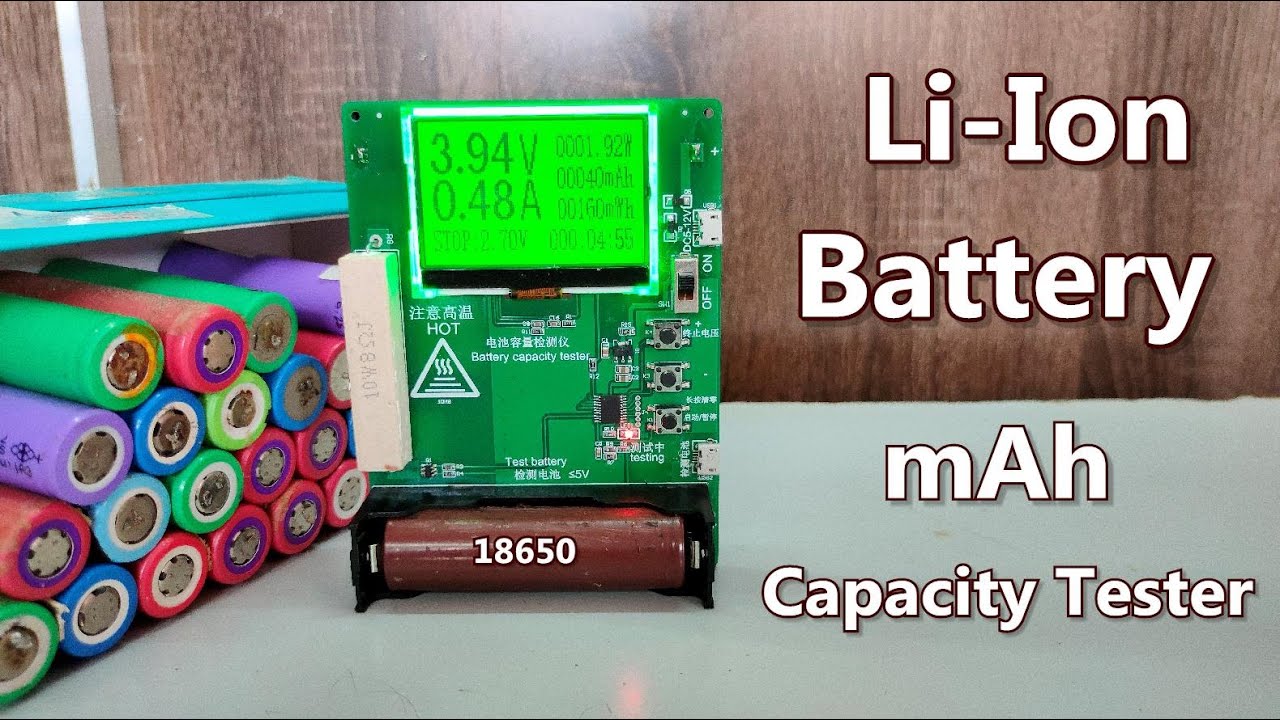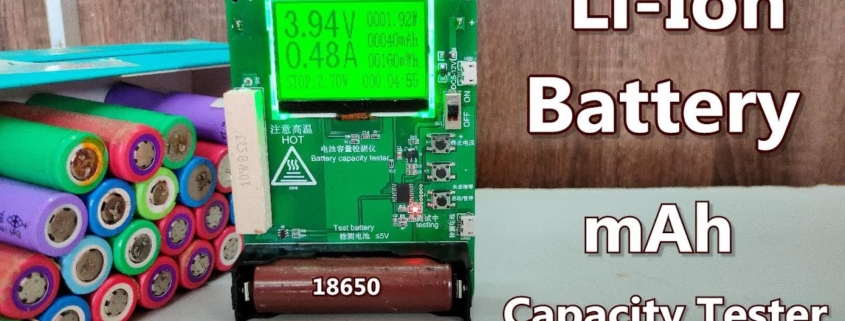How to Calculate 18650 Battery Capacity
Knowing the capacity of an 18650 lithium-ion battery is crucial for properly powering devices and effectively managing multi-cell battery packs. But determining capacity takes a bit more thought than reading the label on an 18650. In this comprehensive guide, I’ll walk through several key methods for accurately calculating 18650 capacity.
An 18650 battery’s capacity indicates how much electric charge it can deliver, measured in milliampere-hours (mAh) or ampere-hours (Ah). But contrary to what the label states, an 18650’s real-world capacity varies significantly based on the discharge current. To find usable capacity, you’ll need to account for this load-dependency.

Why an 18650’s Rated and Actual Capacity Differs
Most 18650s have a capacity rating printed on their casing, typically between 1500mAh to 3500mAh. This number represents the cell’s capacity when discharged at a low, standardized current, around 0.2C (C being the cell’s rated capacity).
Discharging at 0.2C produces the highest possible capacity. But in practice, devices often draw much more current, which reduces an 18650’s usable capacity due to several factors:
Concentration Polarization
As lithium-ions flow through an 18650 during discharge, concentration depletion regions start forming near the electrodes. The cell tries to diffuse more ions to compensate, but can’t keep up at higher currents, lowering capacity.
Ohmic Polarization
The internal resistance of an 18650 causes a voltage drop during current flow, reaching the cut-off voltage faster, ending discharge prematurely.
Rate Capability
18650s use insertion compounds that have limited sites for lithium-ions to enter. A high discharge rate reduces the amount of stored charge they can accept.
Accounting for these effects requires testing to find the actual usable capacity based on your load current.
Calculating 18650 Capacity Based on Discharge Rate
While the rated capacity is helpful for comparison, finding an 18650’s real-world runtime requires calculating the usable capacity at your specific discharge current. There are several ways to determine this.
Use a discharge curve
Reputable battery manufacturers provide discharge characteristic curves in their 18650 datasheets. These graphs show tested capacity levels across various constant discharge currents, out to a defined cut-off voltage.
With this data you can closely estimate capacity at different currents. However, few companies provide these detailed curves.
Use an online 18650 capacity calculator
There are online Li-ion battery calculators that estimate capacity based on discharge rate using archived test data. While not as precise as testing your own cell, it gives a good approximation without laboratory equipment.
Test with a programmable load
The most accurate way to find the real capacity is to test your specific 18650 cell using a programmable electronic load or battery analyzer.
These devices can safely discharge an 18650 at a steady, defined current while logging voltage over time. They discharge down to a specified cut-off voltage, then integrate current to calculate actual capacity.
Most analyzers and smart chargers have built-in discharge testing. For DIY testing, you can use a variable resistor load bank. Just ensure proper protections are in place.
While testing gives the true capacity, it requires an initial equipment investment and additional time.
Consider a safety margin
When sizing a multi-cell battery pack, best practice is to derate the per-cell capacity by 20%. This guards against over-discharging due to variations between cells and capacity loss from aging.
For high-power draws, some designers further derate by 10% to account for temperature effects in real-world use. It’s better to have slightly more capacity than needed rather than run too close to the edge.
Key Factors That Reduce 18650 Capacity
While testing gives the most accurate capacity measure, several variables beyond just discharge rate can reduce an 18650’s usable capacity:
Low temperatures
Lithium-ion cells lose capacity in cold temperatures due to increased internal resistance and slower chemical diffusion rates. Usable capacity can drop by 50% or more below freezing.
High temperatures
Capacity also diminishes above room temperature. Around 45°C, usable capacity decreases up to 20%. At 60°C, capacity can fall by 35%.
Age and cycling
With repeated charge/discharge cycles, lithium-ions lose the ability to properly intercalate into the electrodes, causing permanent capacity fade over an 18650’s lifespan.
Voltage requirements
Device cut-off voltage affects usable capacity. Capacity continues decreasing past 3.0V, so a 2.5V cut-off yields lower capacity than 3.0V. Always size packs based on the system’s cut-off voltage.
C-Rate
Usable capacity varies significantly across discharge rates. A high current can decrease capacity well below 50% of the low-rate rating. Check discharge curves when selecting cells.
By understanding how these factors influence capacity, you can more accurately predict runtime for a given application and operating conditions.
Best Practices For Optimizing 18650 Capacity
While testing and calculations provide the working capacity, there are several ways to help maximize potential lifespan and runtime from your 18650 cells:
- Carefully select cells to match required discharge rates
- Use lower discharge currents when allowable
- Avoid extreme temperature exposure
- Employ active or passive cooling methods
- Prevent fully charging to >4.10V/cell
- Avoid over-discharging below 2.5V/cell
- Utilize balanced battery management
- Slightly oversize pack capacity as a safety factor
Conclusion
Determining the real-world capacity of an 18650 lithium-ion cell involves more than reading the label. By accounting for discharge rate, temperature, age, and other factors, you can dial in the usable capacity to properly size packs and accurately estimate runtime. Matching cells to loads, monitoring voltage limits, and maintaining ideal operating conditions helps unlock an 18650’s full potential.








